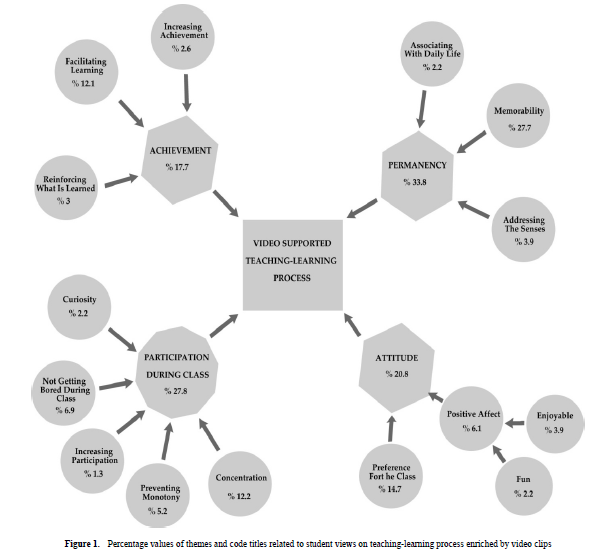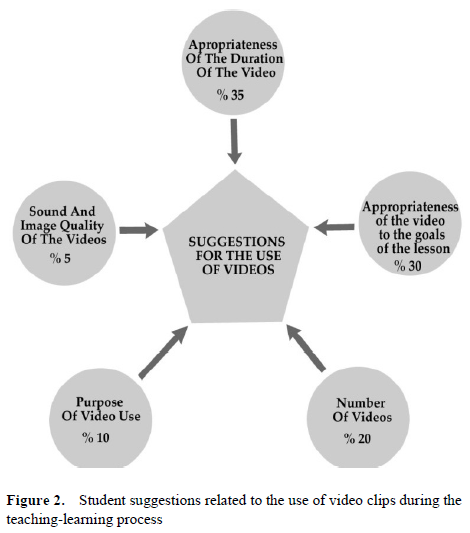e-Learning Ecologies MOOC’s Updates
Video learning: a video tagging tool
Video learning consists of the acquisition of knowledge and skills by using videos. Research on the use of videos as educational tools shows their effectiveness with respect to a number of factors, such as making learning ubiquitous, multimodal, cooperative, creative and fostering student motivation, concentration and engagement in learning (Kosterelioglu 2016). Videos may have been purposely designed as an educational resource or may be later tailored to specific educational needs, and they can also be the outcome of the learning process, as it is the case of video clips made by learners themselves at the end of a project or video tutorials posted on social media, e.g. You Tube. The latter well exemplifies the concept of prosumers in lateral flows of knowledge because the individual can be both a consumer and a producer of knowledge.
Thanks to their multimodality, namely the possibility of integrating multiple modes of knowledge representation and meaning making, videos can be regarded as a tool for enhancing multiliteracies, that is the ability to use a variety of modes beyond the written and oral language, such as visual representations, sounds and gestures. Their unlimited viewing opportunities allow learning at one’s own pace and detailed processing of information. In addition, learners may activate a variety of low and high order thinking skills (Anderson & Krathwohl 2001) and, consequently, their level and type of engagement in building meaning, known as agency, may range from accessing information, commenting, adjusting, rephrasing, elaborating on to being actively involved as knowledge-makers themselves. On the other hand, Carmichael et al. (2018)’s white paper on the use of educational videos in higher education concludes that more investigation is needed to understand the impact of video learning on knowledge development and critical thinking and that their effectiveness may also depend on their design. For instance, the inclusion of the instructor’s image seems to be beneficial to the learners, while the presence of graphics/visuals looks less crucial.
Kosterelioglu (2016)’s study on students’ feedback on the use of video in learning contexts (Figure 1, p. 363) shows that learners regard it not only as a tool increasing their participation, achievement and attitude towards learning, but, above all, they think it supports permanency of learning in long term memory thanks both to the connection it creates with everyday life and the involvement of different senses.
From the same study, in the students’ opinion course designers should consider the following aspects when using video in educational environments (Figure 2, p. 366): duration, relevance, number, purpose and image/sound quality.
EVOLI (https://www.evoli.polimi.it/) is a tool for learning through videos designed within an ecological flipping approach of the learning process (Lando 2020 and 2021) and developed in the frame of the European research project ELSE (Eco/logical Learning and Simulation Environments in Higher Education, http://www.elseproject.eu/). It is a free user-friendly video tagging tool by which students (with a log-in or anonymously) can give their feedback and comment on specific points while watching a video, which can be any type of video input provided by the instructor (e.g. the recording of a lecture, an educational video on the web or a video lesson delivered by the instructor themselves). The main benefit for the teaching and learning process consists of the possibility for the teacher to check the students’ reactions to the video, pinpoint the unclear parts and adjust the teaching process accordingly. This form of asynchronous interaction between the teacher and the learner also enhances students’ agency in that through their reactions and comments they contribute to the construction of knowledge within their learning environment. In fact, a request for clarification on behalf of a single student with reference to a specific point in the video will bring about new teacher’s input for the whole learning group.
Summing up, videos are undoubtedly a rich tool for learning and the development of digital literacy, a key life skill not only for educators but also for any individual in everyday life, as consumer and/or producer of knowledge using digital media. However, in order for the learners to entirely benefit from videos as an educational resource there must be a well-designed pedagogical and technological scaffold on behalf of a multiliterate teacher, who is able to integrate multiple modes of knowledge representation and set goals and design tasks to keep students engaged.
References
Anderson, L.W., & Krathwohl, D. (2001). A taxonomy for learning, teaching, and Assessing: A revision of Bloom's Taxonomy of Educational Objectives. Allyn & Bacon, MA (Pearson Education Group).
Carmichael M., Reid A. & Karpicke J. 2018. Assessing the Impact of Educational Video on Student Engagement, Critical Thinking and learning: The Current State of Play (A SAGE White Paper). https://group.sagepub.com/white-paper-archive/assessing-the-impact-of-educational-video-on-student-engagement-critical-thinking-and-learning-the-current-state-of-play
ELSE Project. http://www.elseproject.eu/
EVOLI. https://www.evoli.polimi.it/
Kosterelioglu I. 2016. Student Views On Learning Environments Enriched By Video Clips. Universal Journal of Educational Research 4(2), 359-369. DOI: 10.13189/ujer.2016.040207
Lando E. 2020. Session 2A EVOLI – a video tagging tool for an enhances flipping learning approach. City, University of London. https://blogs.city.ac.uk/learningatcity/learning-at-city-conference-2021/session-2a-evoli-a-video-tagging-tool-for-an-enhanced-flipping-learning-approach/
Lando E. 2021. Revisiting flipped learning for online engagement. City, University of London https://blogs.city.ac.uk/learningatcity/2020/04/01/revisiting-flipped-learning-for-online-engagement/




yes by using videos' in teaching learning method can be fruitful for students learning in terms of catching the attention of the students.